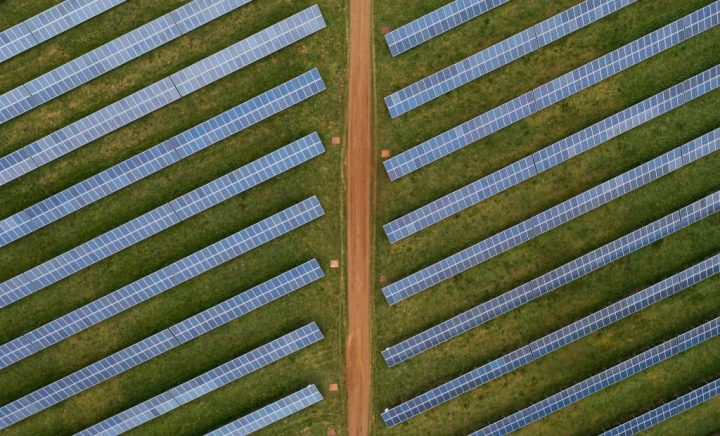We have spent a year talking about energy security, but with inflation in food prices running at 19 per cent, how much longer before the debate turns to food security? Ideally, we would have policies which prioritise energy security as well as food security, but sadly the latter seems to have been forgotten. National self-sufficiency in food (the percentage produced relative to the percentage consumed) has been allowed to fall from 74 per cent to 61 per cent since the mid-1980s.
Worse, energy and climate policy is damaging food security. There is no better example of how the latter is being sacrificed in favour of the former than Project Fortress, Britain’s largest solar farm. Work on the project has just got underway on 890 acres between the town of Faversham and the north Kent coast.
At a time when food price inflation is rampant, this is a conflict which deserves to be taken seriously
Indeed, Project Fortress is just one of many large-scale solar farms which are due to consume large areas of agricultural land in the next few years. This was a process which Liz Truss wanted to stop during her brief premiership but which has subsequently been given the green light.
Project Fortress, it has been claimed, will be able to provide enough electricity for 100,000 homes. This may be a little over-hopeful, given the intermittent nature of solar energy. Nevertheless, its 350 MW of output would be enough to generate electricity for half a million homes when the sun is shining brightly – but that is often when electricity demand is quite low.
While Project Fortress will also incorporate 700 MWh of energy storage, this is only enough to store two hours’ worth of peak output. That is hardly enough to save energy from a summer’s day to a winter’s evening, when power demand is highest, and when Project Fortress will be capturing zero solar energy. In terms of energy security, a solar farm is no answer because it will always require backup – even if it does help to lower carbon emissions.
But even if the National Grid is able to absorb enough energy from Project Fortress for it to claim to be providing power to 100,000 homes, what is on the other side of the ledger? The lost agricultural potential?
While the Project Fortress site includes some marshland grazing, over 90 per cent of the site was until recently in arable use. To give an idea of what this was producing, wheat-growing land in Britain produced an average of 3.5 tonnes per acre. To produce a loaf of wholemeal bread requires around 500 grammes of wheat. Put all this together, and 800 acres of wheat-growing land can produce around 5.6 million loaves of bread a year. That is more than enough to supply a loaf of bread a week to 100,000 homes.
The green energy lobby has constantly tried to downplay the issue of agricultural land being taken for solar farms. I have often heard it asserted that only a minuscule percentage of land is being take out of production. It is often wrongfully claimed that it is pretty useless for agriculture because it is only grade two or three land. Such land can still produce large amounts of food, even if it is not the best. But the above puts it into context: there really is a conflict between solar energy production and food production. At a time when food price inflation is rampant, it is a conflict which deserves to be taken seriously.
I would say that Liz Truss was right. Solar panels can be a clean, effective way of generating electricity and they are a lot cheaper than they used to be; to declare an interest I have them on my own roof. But roofs are where they should be. To swallow agricultural land makes a lot less sense.







Comments